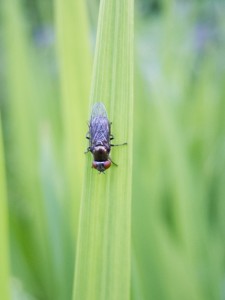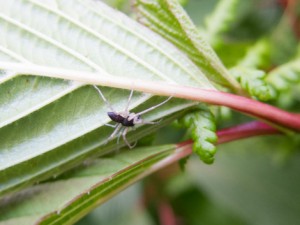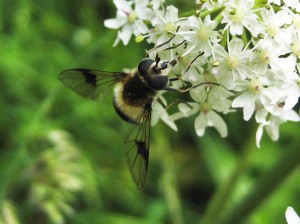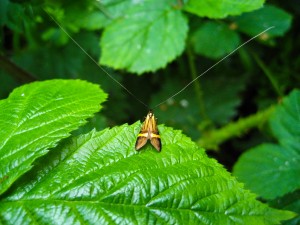I am now obsessed with my close up binoculars (although I have to wonder what the 8x magnification looks like). A lack of nature over the weekend due to poor weather conditions has not stopped me though.
I’ve discovered a red-tailed bumble bee nest at the bottom of the garden. I watched several workers (I counted a maximum of five leaving without returning, but there might be more) coming and going. Most had orange pollen baskets full, although a couple seemed to come back without any provisions. I had a slight hope that the bees might have been the red shanked carder bee because I swear I saw some red hairs on the legs of one of them – but it might just have been pollen dust. I live in hope though and now I know where they live I can keep a watch. There was a different bumble species (possibly white-tailed) visiting the aquilegia and with full yellow pollen baskets, so I’m not sure where my red-tails were foraging.
The fern smut moths seem to be present in quite big numbers now I know what they look like. However, my ID skills stopped short of other micro moths – there was a very white one with black eyes that I have some terrible photos of to help with my ID.
I watched a small orange fly with black spots on its wings (possibly a fruit fly) wait for a small spider to leave the corpse of another fly before moving in, and I saw another fly – probably a hoverfly, sitting on a leaf. I watched it lift its wings up to clean over the top of its abdomen with its hind legs and then clean each of its wings between these legs. The hind legs by the way were black but with a yellow stripe / underside. I mean, how cool is that, watching it carefully smooth each wing in turn between its legs?
And, there are so many spiders, many different types. How do you start to tell the difference? I noticed this one, a male Philodromus dispar, a type of crab spider sitting on a leaf. It was still there the next day. It seems to have two legs that are much smaller and thinner than the others. It does move, but it was back again in the same spot the next day.
I haven’t even started on the slugs and snails yet… So much to discover and I don’t even have to go very far.


